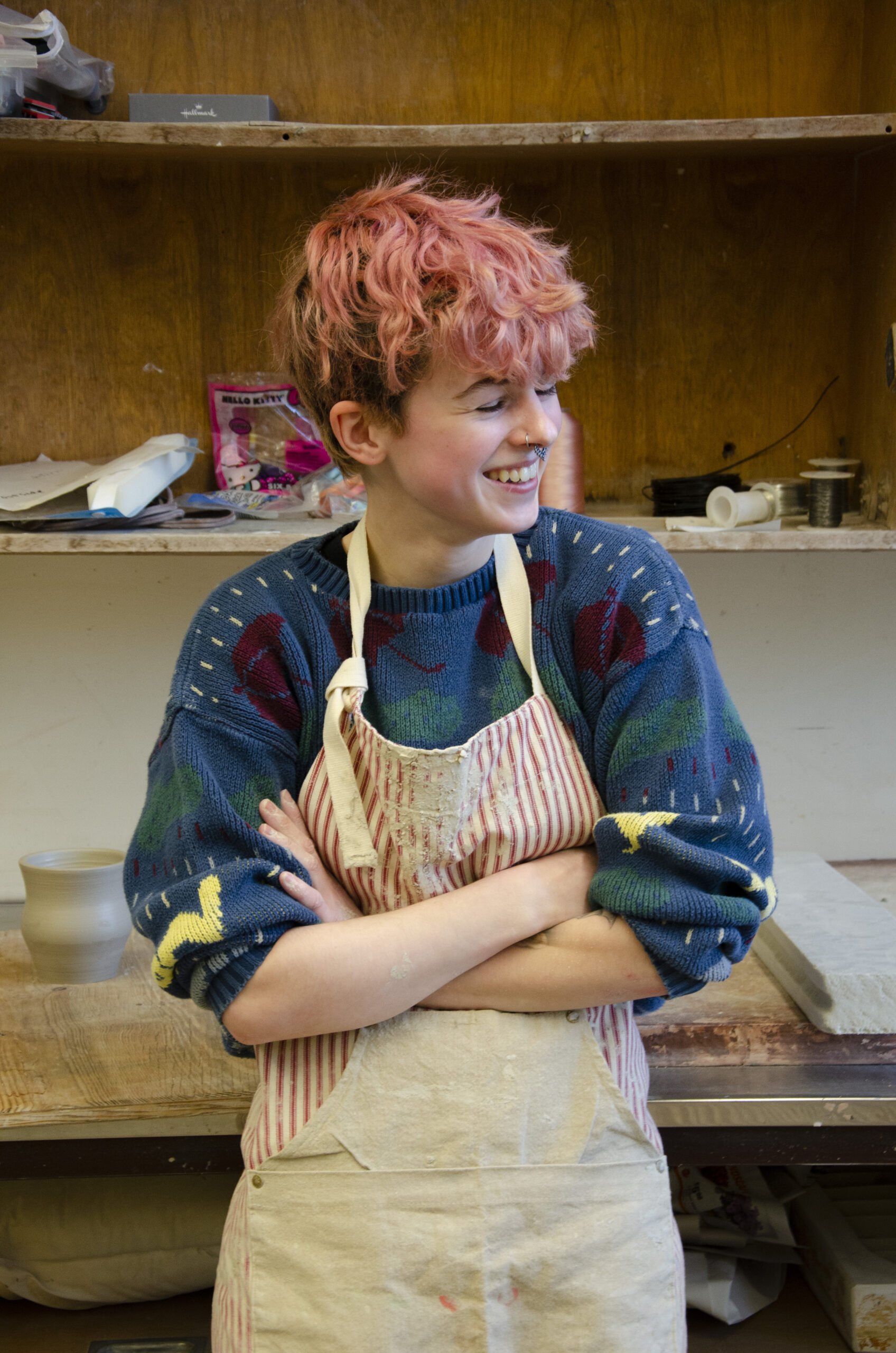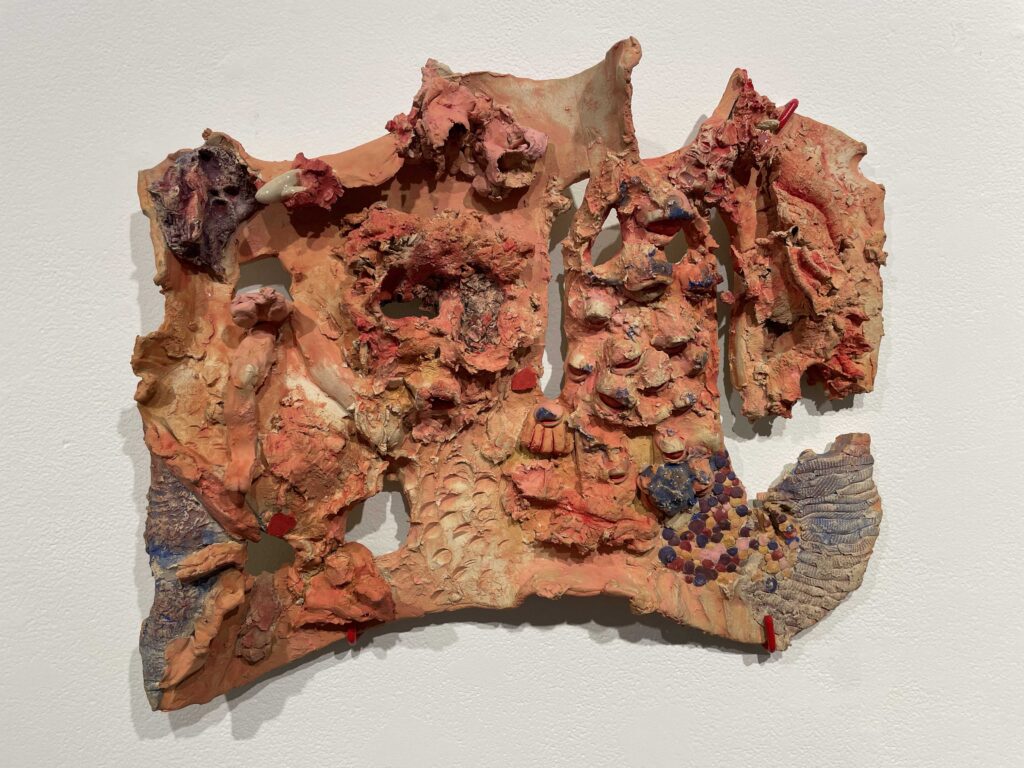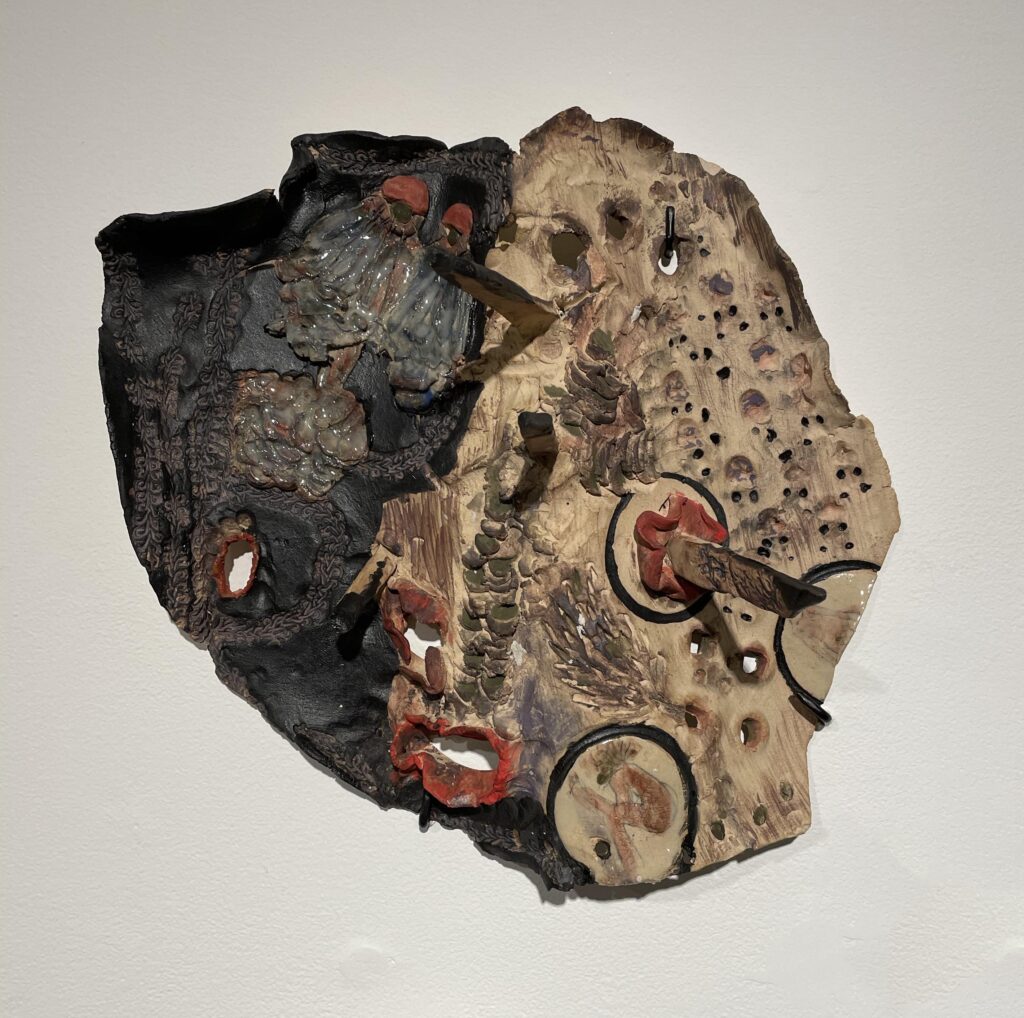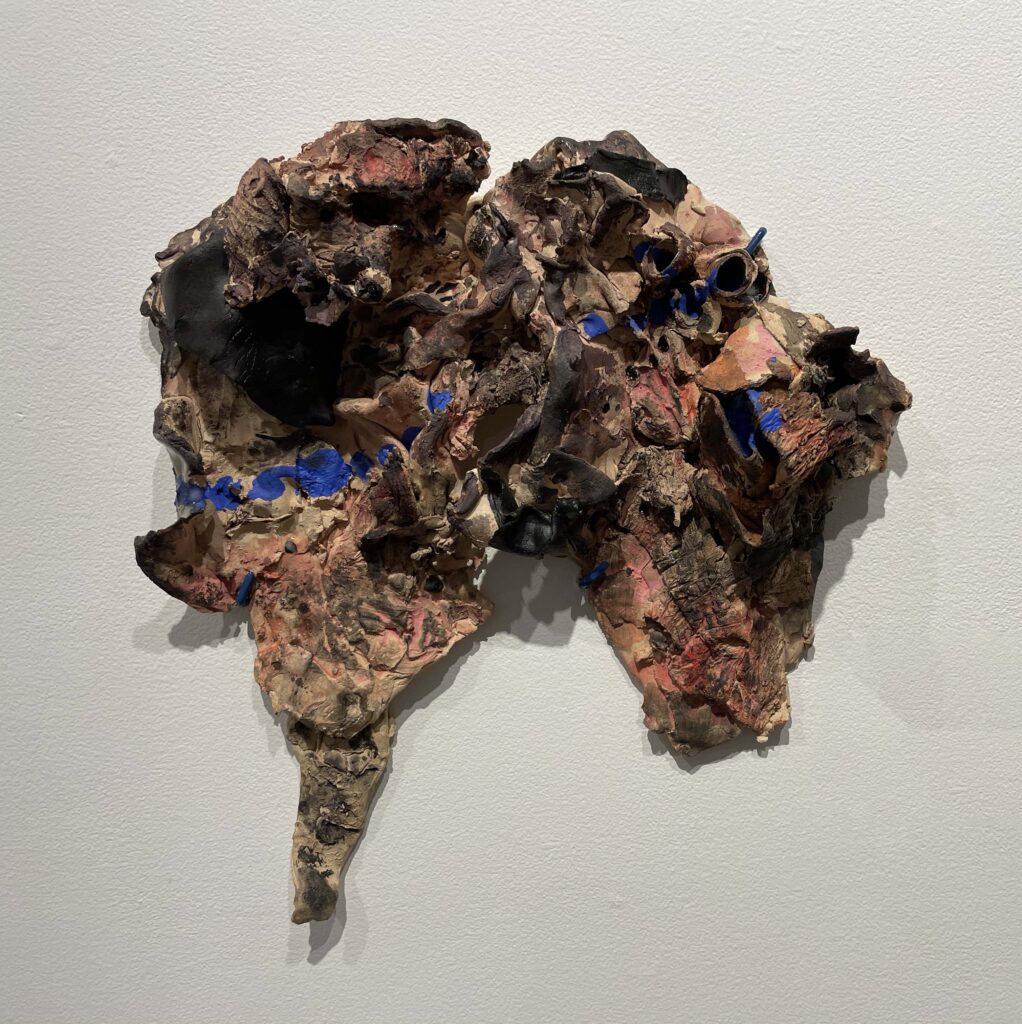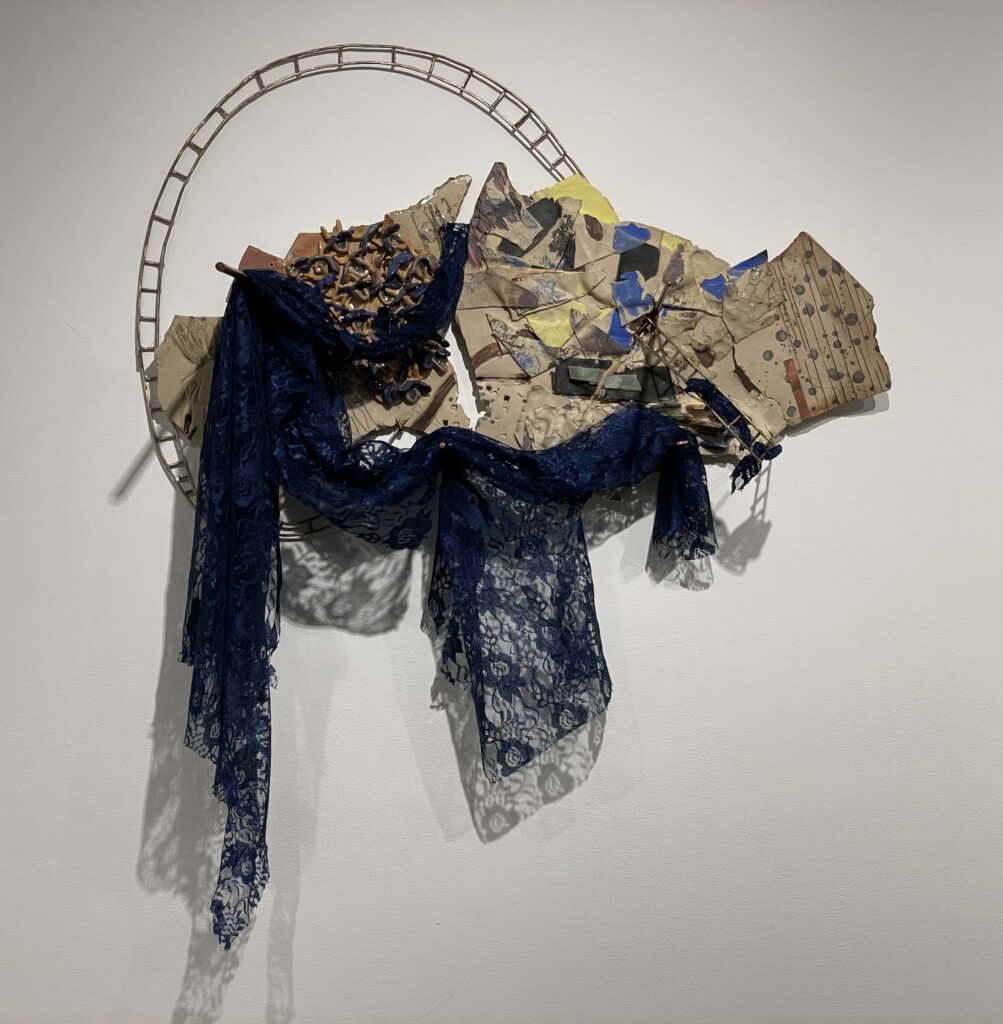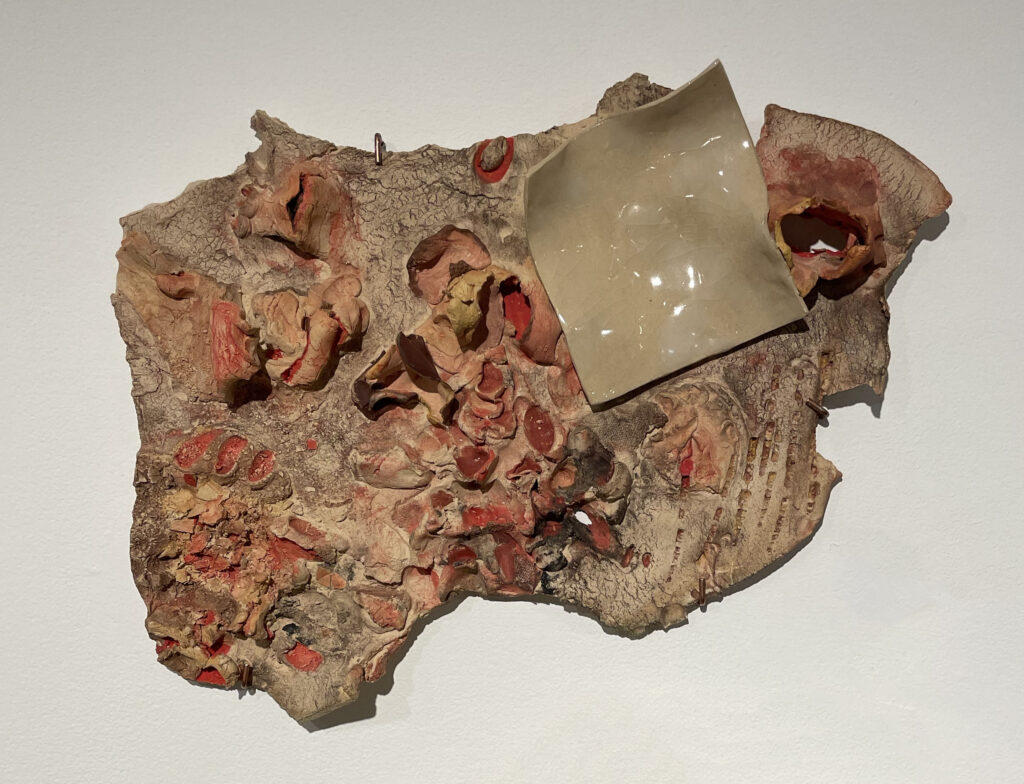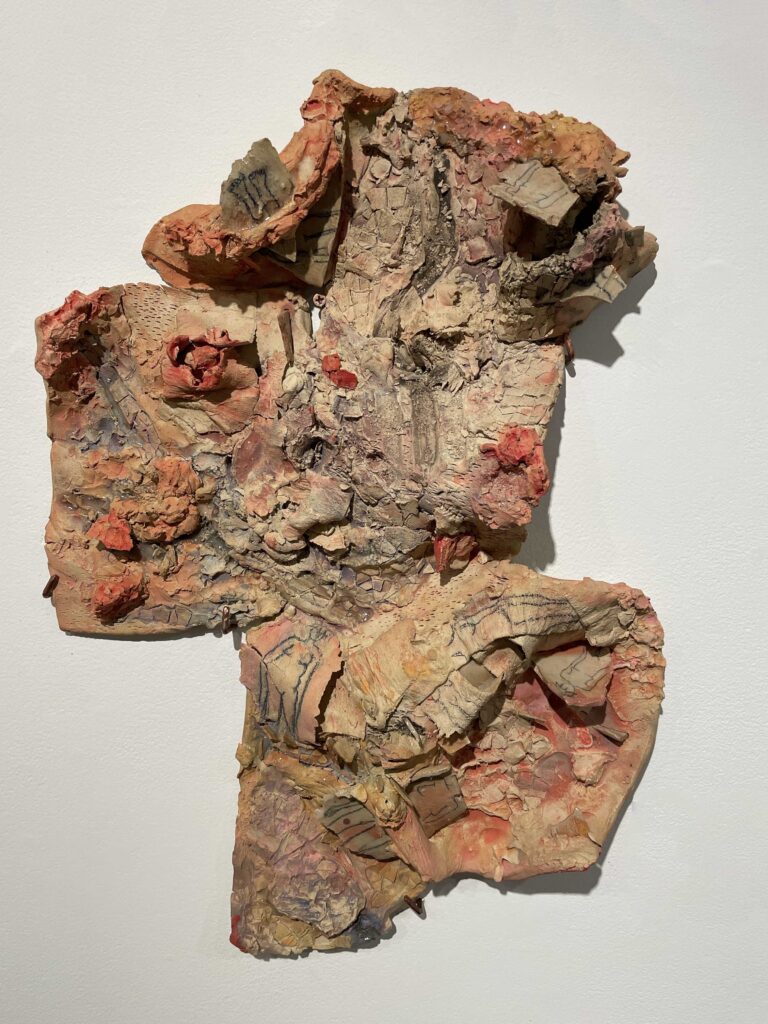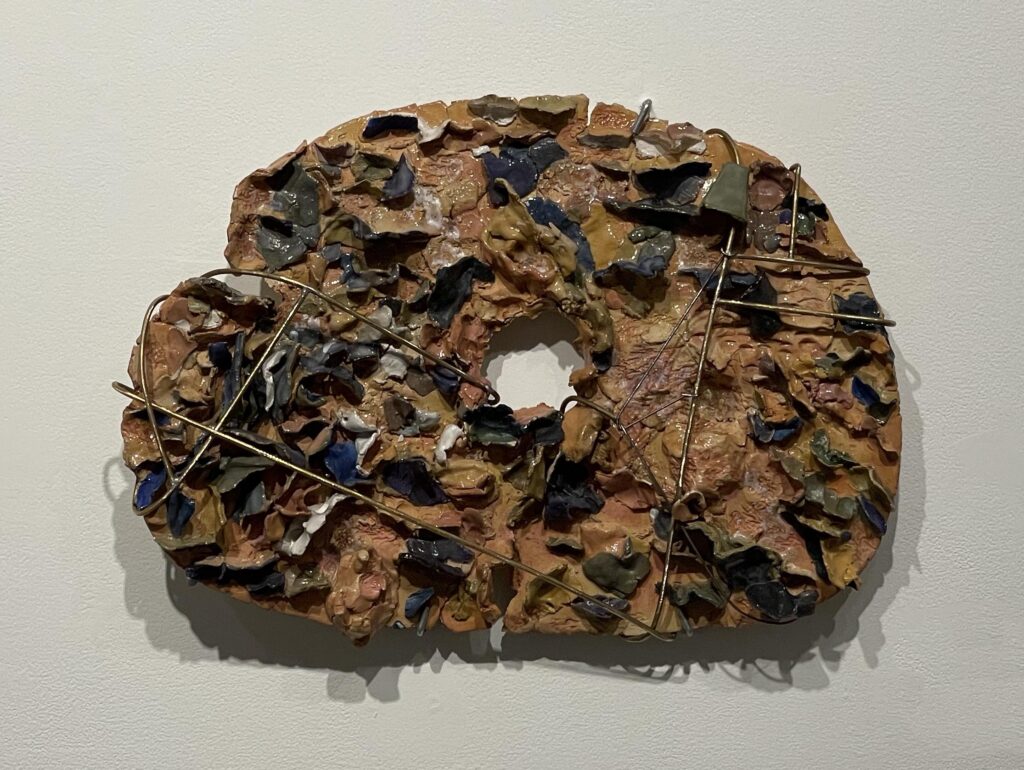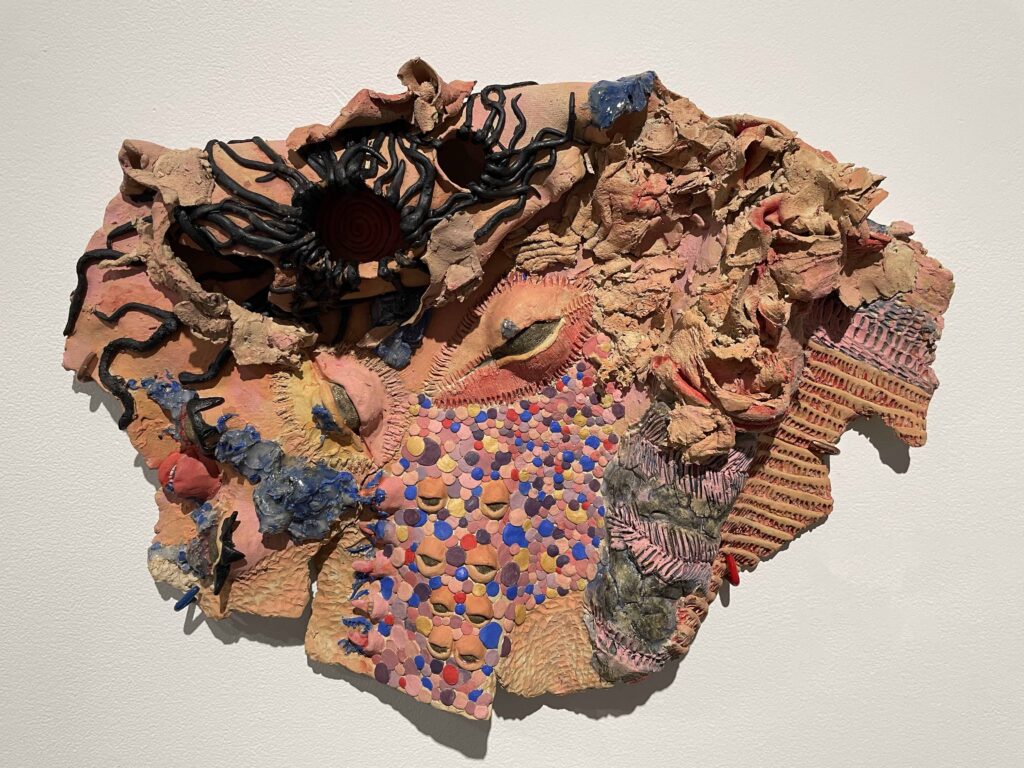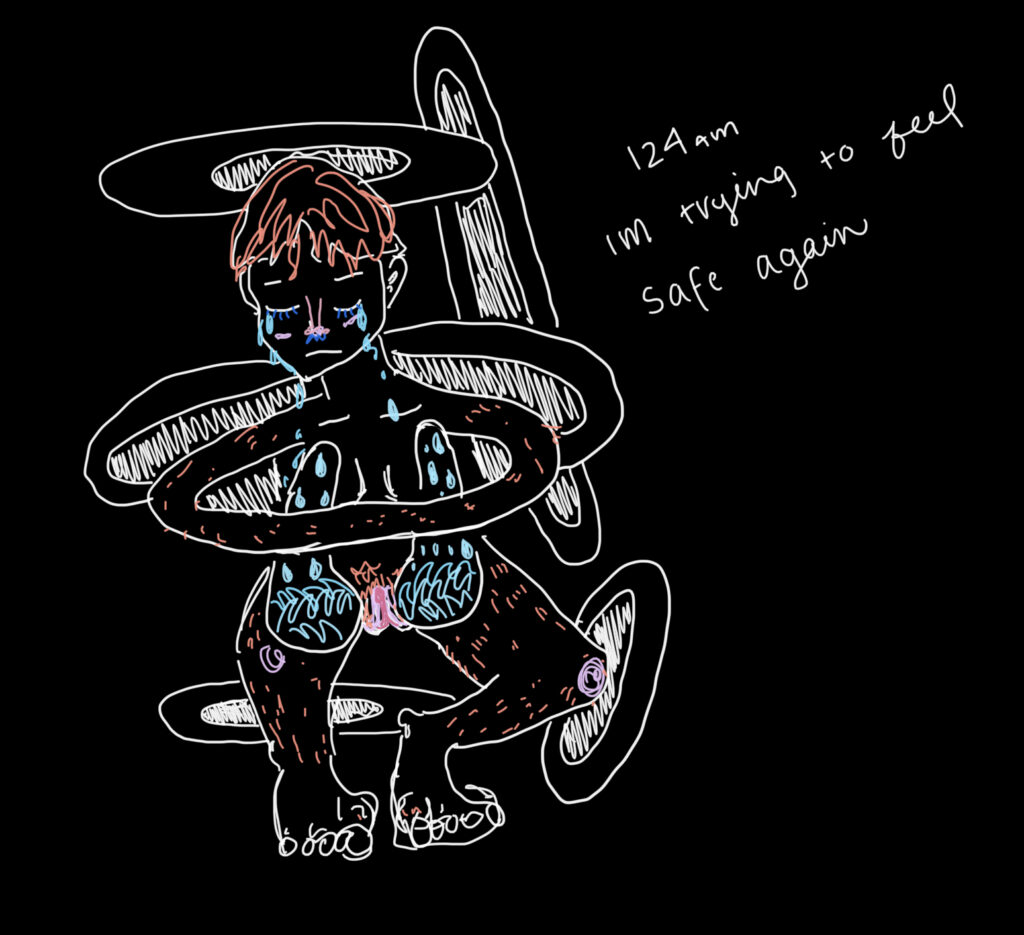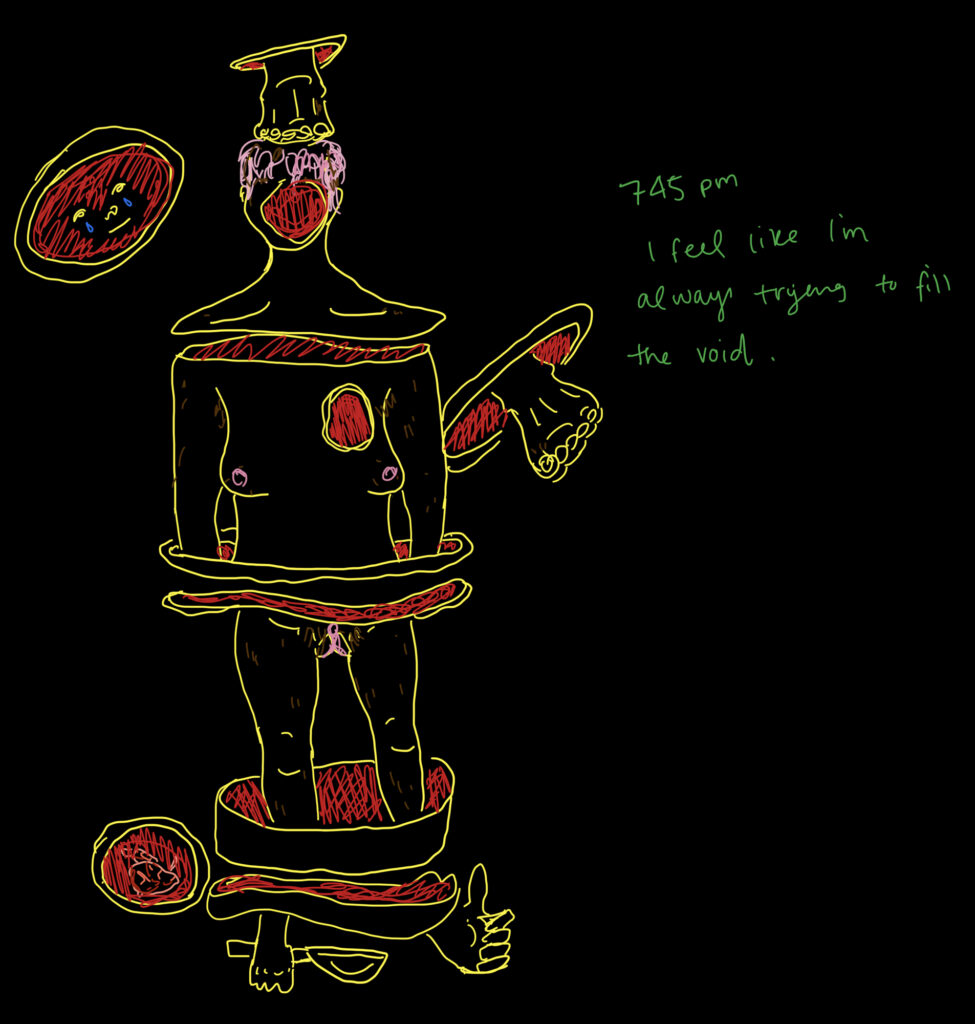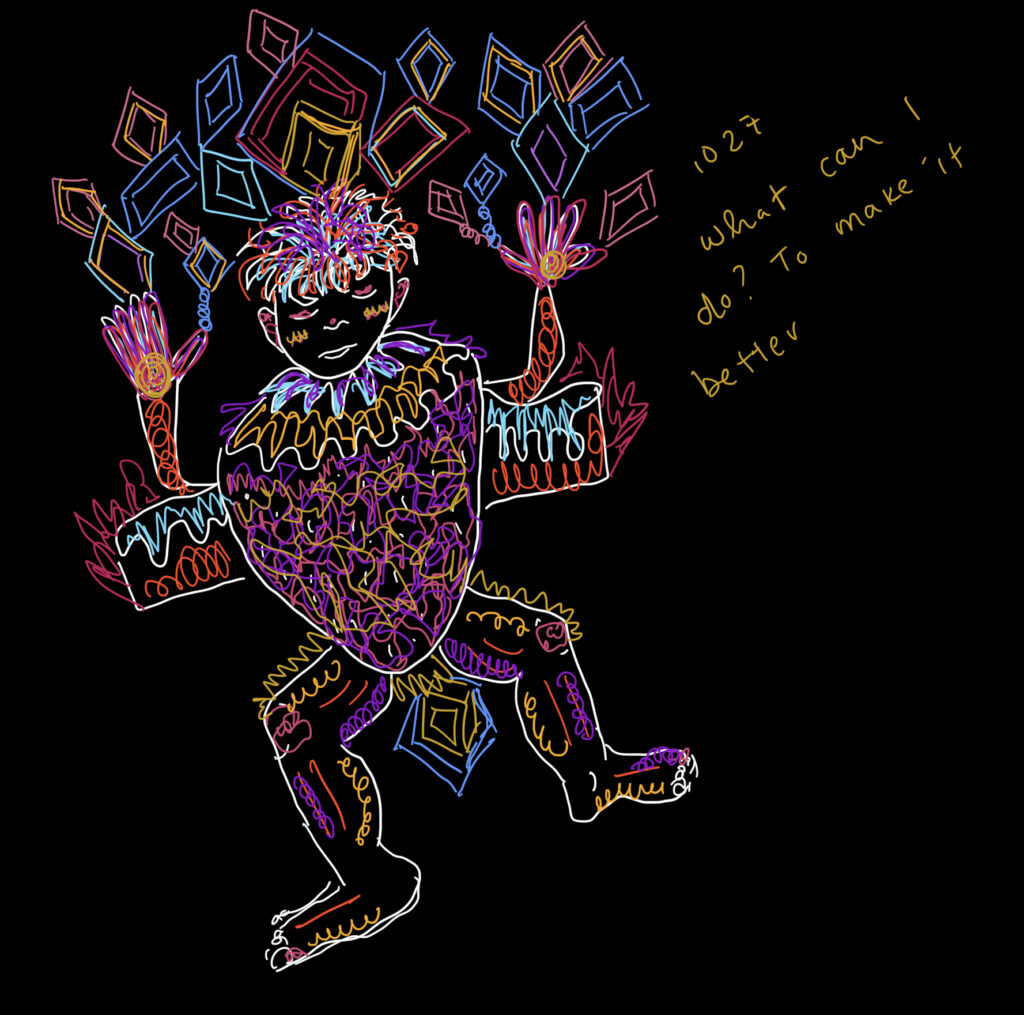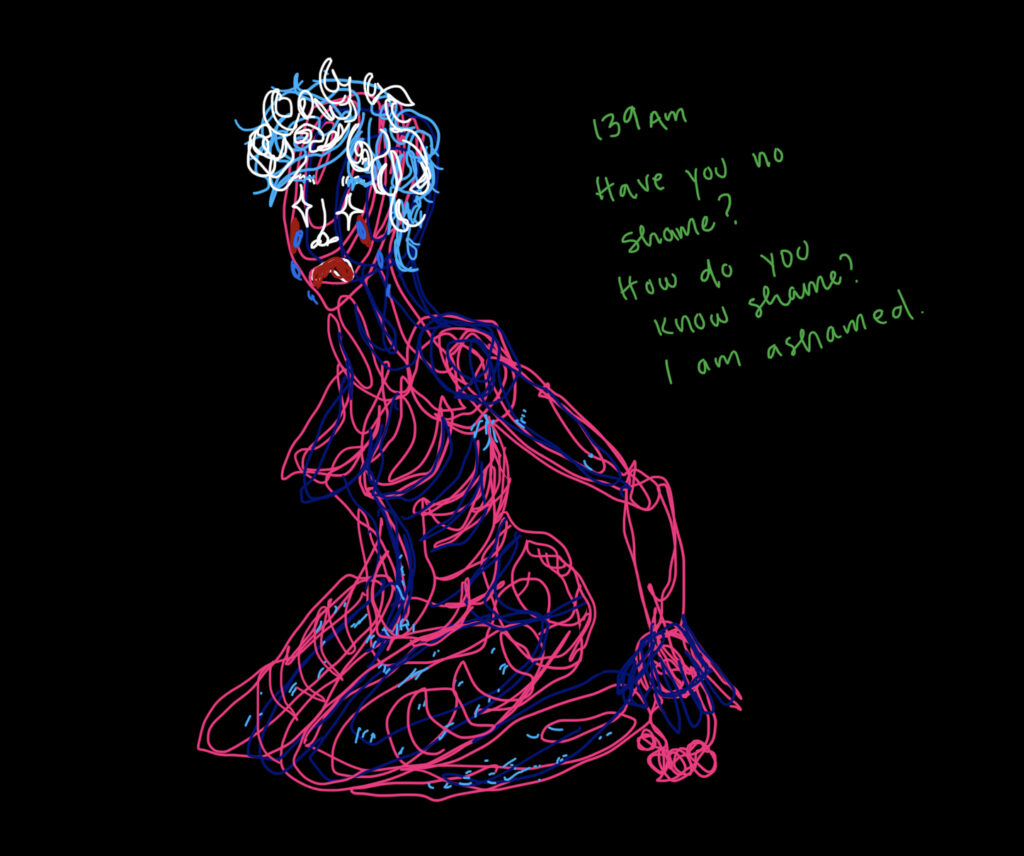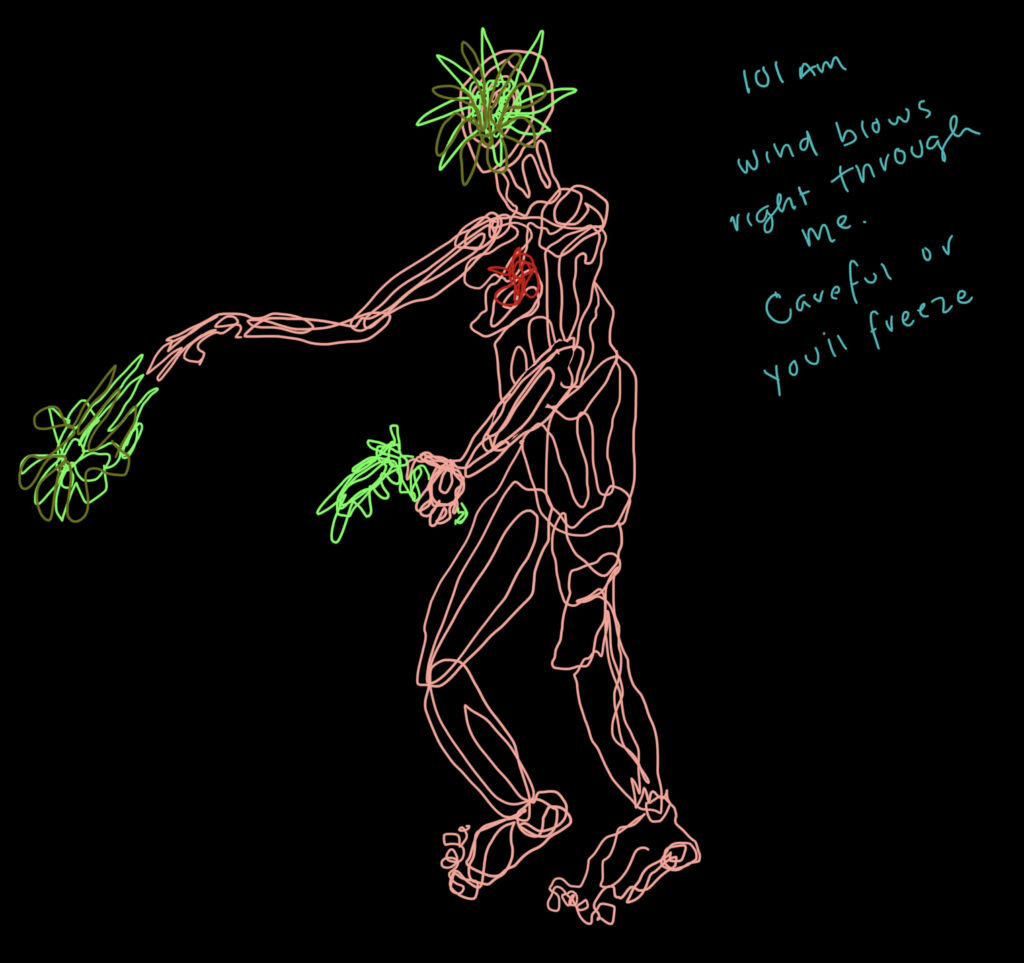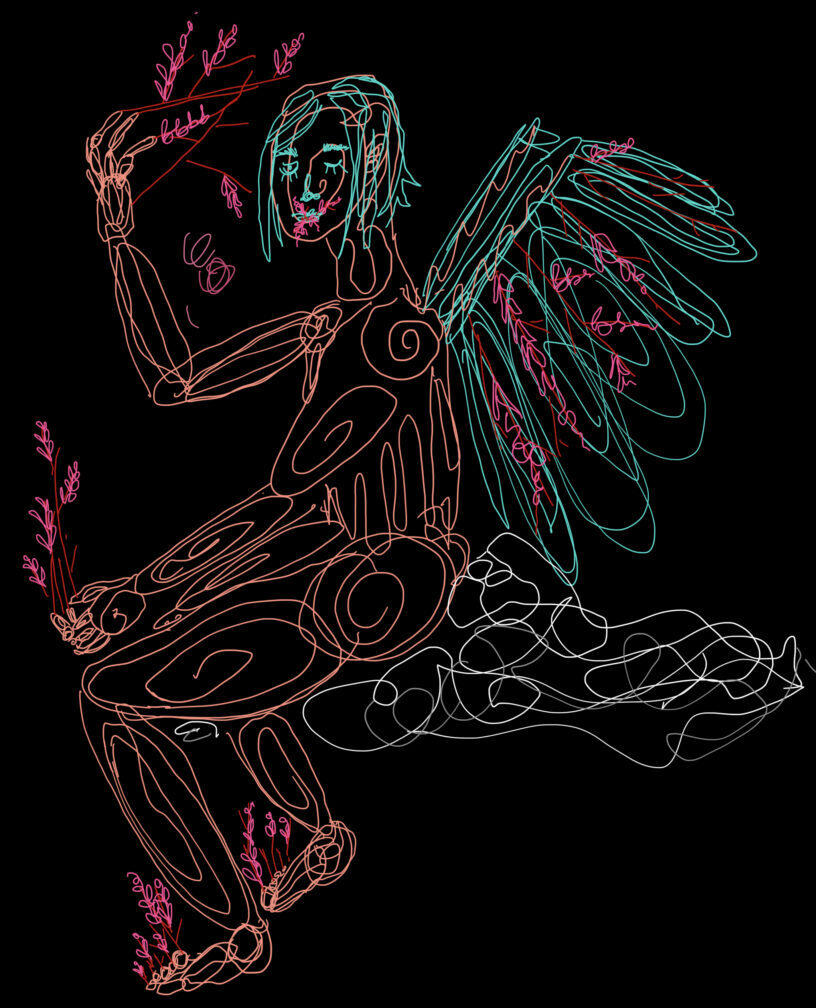Alizah Coraccio
About Alizah
—— Ceramics
I draw myself naked with distorted limbs, curving the form around a clay surface like a tattoo. With ideas of intimacy and vulnerability in mind, I work intuitively to find harmony and completion in both process and content. Using warm colors, I wash over the surface of the clay to create flesh like rolls and valleys. My fingers and nails pinch, pierce and rip the clay to create texture. I’ve left behind shiny and reflective finishes in much of my work, leaving the surface very dry and matte instead. Drawing digitally is an important part of my process, and I draw self-portraits as a way to document my day. My drawings are often more vulnerable and uncomfortable than my ceramic work. I use these drawings to further inspire myself to shed false skin and create work that is deeply rooted in how I experience the world.
“My work is an internal conversation I have with the many parts of myself. Regardless of the medium I work in, I use ideas that stem from my body and emotions. This manifests itself as figures drawn on the surfaces and as figurative slab forms.”
Watch Alizah’s Interview:
Artist’s Statement
I create my clay forms with a sense of urgency. Working quickly and finishing a piece in one session allows me to rely on intuition. The process is messy. My physical interactions with the clay makes it easier for me to respond and react to the process. The finished clay wall sculptures I make are textured, colorful, and heavily inspired by the human body and nature.
My work is an internal conversation I have with the many parts of myself. Regardless of the medium I work in, I use ideas that stem from my body and emotions. This manifests itself as figures drawn on the surfaces and as figurative slab forms. I use self-portraiture to document my mental state and I feel an overwhelming sense of vulnerability when I see my naked form fired and glazed. Sometimes the figures are trapped in a map-like expanse or drowning in a void. Naked forms first appeared in digital drawings I made as a way of journaling. The shapes I make in my drawings later inspire the intuitive process of throwing slabs for my wall pieces.
Starting out with wet clay slabs, I use slip (watered-down clay) and dried clay dust to add texture. I smear the slip on the soapstone and scrape it off repeatedly to make thin ribbons. Then I throw and stack these forms onto the curved slabs like layers of skin. These techniques make the piece feel delicate at times; I worry that if I hold it a certain way, a piece will chip off. I lay the slabs over crumpled newspaper and work with variations in weight and line to animate the form. Throwing, ripping, pinching, and biting the clay has allowed me to explore textures that remind me of tree growths and oozing orifices. I think about how the slab forms fit together and how the piece relates to the space in and around it. Using metal and fabric I create pieces that extend into space, keeping the viewer at a distance from the colorful textured surface.
I use color and finish to highlight texture, change the surface and to make the clay look like other materials. For example, I use peaches, reds, and yellows to transform the texture into biological material. Black underglaze is a way of separating and distinguishing visual elements. I think of the black as a void, using it to contrast whatever I lay on top. I bring out clay’s earthy texture when I leave a piece matte. When I add glaze, it accentuates the reflection of light and the way it defines a form. Sometimes I add both matte and reflective elements to help create tension.
I am drawn to working with clay because it is an abundant resource, and its wide range of expressive qualities allows me to tell a story about my life. Working with this forgiving and transformative material involves using every part of my body. Clay is a contradictory material, and I respond to its inability to be only one thing. This material allows for creative freedom and it also requires intense structure and recognition of boundaries. The necessity of resilience and patience when working with clay has made me a more flexible and understanding person.

